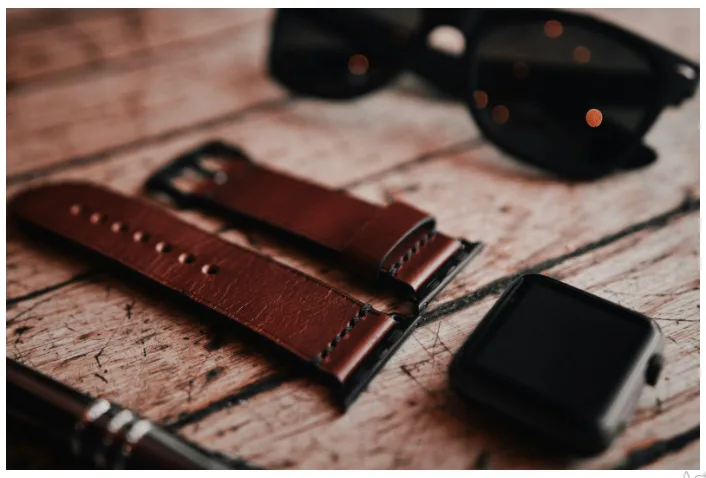Cultural Identity Through Daily Objects: What We Carry Speaks Volumes
In today’s interconnected world, identity is not just spoken, it is worn, displayed, and carried. From the bags slung over our shoulders to the devices in our pockets, and even the smallest accessories, everyday items say a great deal about who we are. Consider something as seemingly subtle as premium watch bands for every style: on the surface, it is a practical object, but the choice of leather, fabric, or metal signals personality, taste, and even cultural connection.
These quiet symbols serve as extensions of ourselves, shaping how we’re perceived and how we connect with others. They are more than possessions, they are cultural messengers.
Everyday Objects as Silent Storytellers
Anthropologists refer to these possessions as part of material culture, the physical objects that carry meaning within societies. Even when chosen for functionality, they reflect broader identities.
- A woven textile can signify centuries of cultural heritage.
- A handcrafted phone case may hint at environmental consciousness.
- A minimalist leather strap may echo the “quiet luxury” movement.
Every object exists at the intersection of function and expression. The water bottle that accompanies someone to the office may signal their commitment to wellness or sustainability. The pen chosen for daily writing may be less about ink flow and more about the feeling of sophistication or craftsmanship it conveys.
Why Identity Lives in What We Carry
1. Personal Expression Without Words
Before introductions are made, everyday items often communicate on our behalf. The cut of a jacket, the material of a wallet, or the pattern on a scarf provides hints of identity, from profession to passions.
2. Cultural Continuity in Daily Life
For immigrant or diaspora communities, objects often preserve links to their heritage. A handmade tote stitched in a traditional method, or jewelry crafted with ancestral patterns, becomes a reminder of origin and belonging, even in foreign environments.
3. Social Connection and Recognition
Objects often spark unspoken bonds. Two commuters noticing similar cultural patterns in their accessories may exchange a nod of recognition. A stranger complimenting an artisanal bracelet may create a moment of shared appreciation that transcends language.
Examples of Objects That Carry Cultural Weight
Artisanal Accessories
From beaded keychains made by Indigenous artists to leather wallets with regional embossing, accessories often function as compact canvases of heritage and pride.
Heritage Fabrics and Patterns
Scarves and bags featuring batik, ikat, tartan, or tribal motifs become cultural signatures. They are more than fashion, they are fragments of identity woven into everyday attire.
Repurposed Materials with Meaning
Upcycled designs, from saris transformed into handbags to denim patches reimagined as caps, carry layered stories of creativity, resilience, and resourcefulness.
Modern Tech with Traditional Touch
Smartphones housed in handcrafted wooden cases or smartwatches paired with artisanal straps showcase a blending of modern necessity and cultural expression. They remind us that identity does not disappear in the digital age, it adapts.
The Psychology of Cultural Expression
Psychologists note that possessions often function as “identity markers.” When chosen deliberately, objects reinforce self-concept and boost confidence. Carrying a culturally significant item makes people feel more grounded in who they are.
This is closely tied to the concept of “quiet luxury”, valuing subtle, well-crafted, often heritage-rooted items over ostentatious branding. Wearing a subtle motif or carrying an understated artisanal piece feels authentic. It affirms identity without demanding external validation.
A Global Shift Toward Meaningful Objects
Across the globe, consumers are moving away from mass production toward meaningful ownership. The rise of artisanal marketplaces, the popularity of fair-trade accessories, and the resurgence of heritage crafts all point to a desire for identity-driven purchases.
According to the United Nations Conference on Trade and Development (UNCTAD), sustainable consumption patterns are increasingly shaping global trade, with younger generations showing strong preference for products that emphasize durability, ethical sourcing, and cultural value. This shift suggests that consumers are not only buying fewer things, they are buying things that matter.
This trend also reflects a generational shift. Gen Z and millennials, in particular, want their purchases to reflect personal values, be it sustainability, cultural pride, or individuality.
Everyday Objects as Cultural Bridges
Objects not only express identity but also foster cross-cultural understanding. When a patterned tote or handmade bracelet invites curiosity, it becomes a bridge between cultures. These moments of recognition nurture cultural humility, the practice of respecting, rather than appropriating, another culture.
Government and educational institutions even highlight cultural humility as essential to building inclusive societies. For example, the California Office of Tribal Affairs notes that acknowledging cultural expression through everyday life promotes respect and shared awareness across communities.
Where Fashion and Culture Intersect
Cultural identity through objects has also caught the attention of the fashion industry:
- Global collaborations: Major brands are partnering with artisans to integrate cultural craftsmanship into modern designs.
- Customization: Consumers increasingly seek personalization, like commissioning straps, jewelry, or clothing that incorporate ancestral patterns.
- Sustainable fashion: Heritage techniques often use local materials and minimal waste, aligning with today’s sustainability movement.
What may look like a simple wallet, scarf, or watch strap often carries layers of meaning: artistry, ethics, and identity combined.
Looking Ahead: The Future of Cultural Expression Through Objects
- Digital Storytelling in Objects
Future designs may embed digital features like QR codes linking to stories of the maker, cultural background, or sustainability details. Objects may soon tell their own stories directly. - Hybrid Designs
We will likely see more fusion objects: modern gadgets wrapped in traditional craft, or accessories that merge global trends with local materials. - Ethical and Traceable Craft
As consumers demand transparency, traceability will become a feature of cultural items. Buyers will want proof of fair wages, ethical sourcing, and authentic craftsmanship. - Global Platforms for Local Artisans
Online marketplaces will continue to elevate regional artisans to global visibility, ensuring their crafts become both cultural markers and economic opportunities.
Objects are not silent. They are storytellers, ambassadors, and reflections of who we are. From artisanal fabrics to handcrafted accessories, from traditional motifs to premium watch bands for every style, our everyday items quietly but powerfully express identity.
As the world grows increasingly globalized, it’s not just the grand cultural symbols that matter. It’s the details we carry in our pockets, wear on our wrists, or drape across our shoulders that speak volumes. These choices bridge past and present, personal and cultural, function and fashion, making the ordinary deeply extraordinary.





